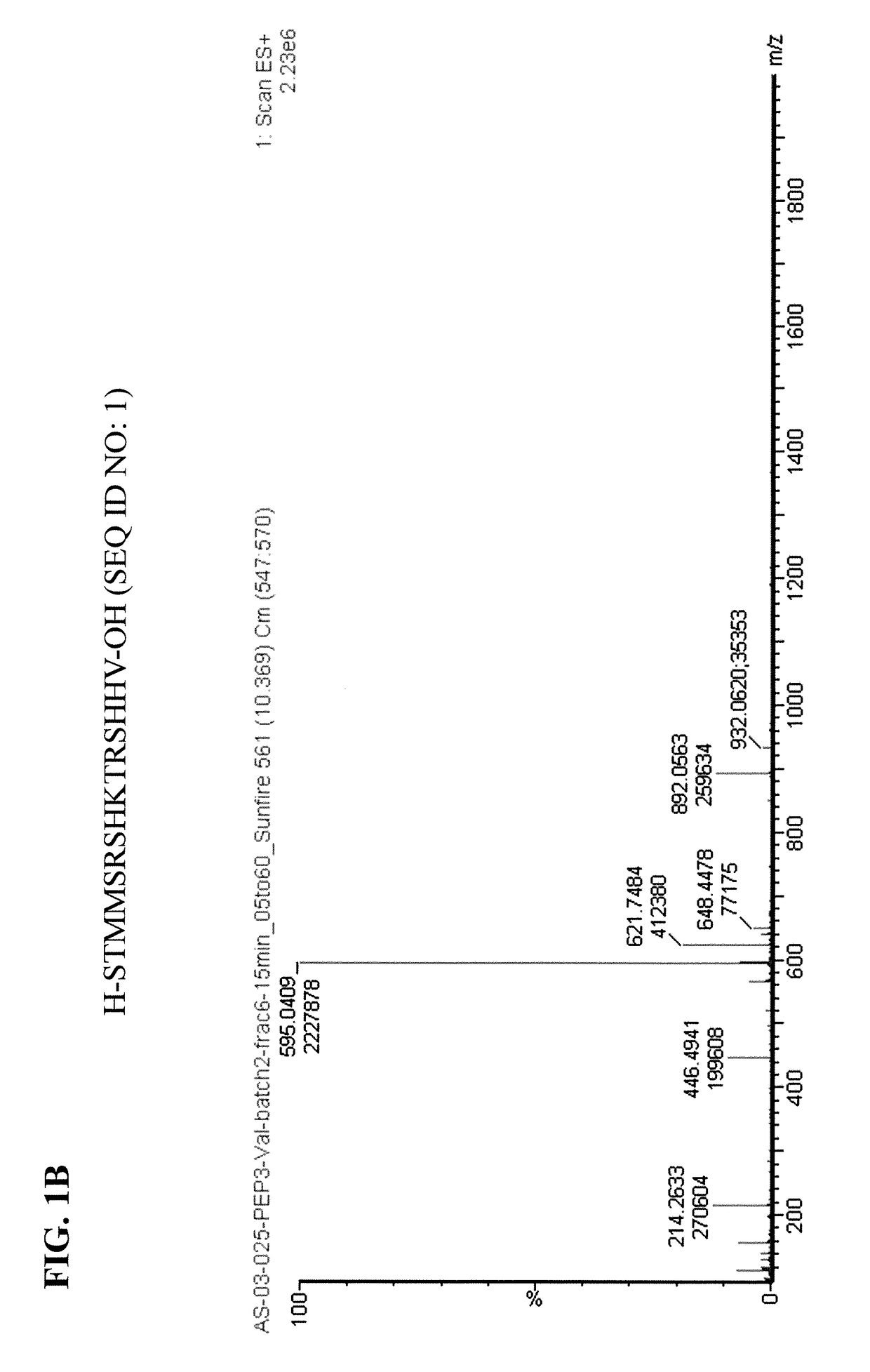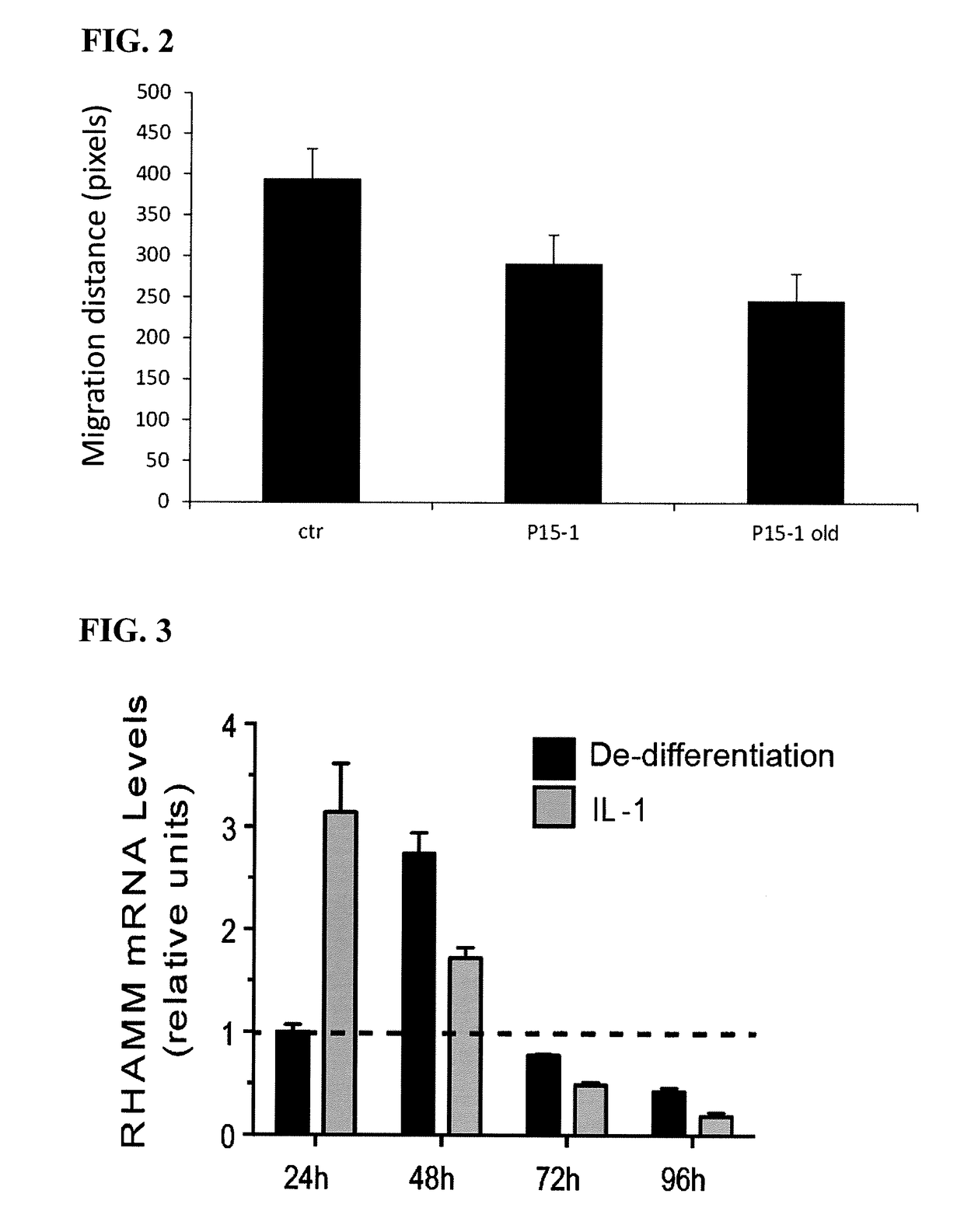Compositons and methods for cartilage defect repair using a rhamm-mimetic peptide
a cartilage defect and peptide technology, applied in the field of cartilage repair, can solve the problems of reduced joint function, early onset of osteoarthritis, and reduced quality of li
- Summary
- Abstract
- Description
- Claims
- Application Information
AI Technical Summary
Benefits of technology
Problems solved by technology
Method used
Image
Examples
example 2
[0054]Methods
[0055]Chondrocyte Cultures. Human articular chondrocytes were isolated from articular cartilage samples obtained from patients (donor age range 48-67) undergoing total knee replacement surgery at NYU Hospital for Joint Diseases. Knee cartilage was harvested from regions with no macroscopically evident degeneration. The collection of tissue from patients undergoing knee replacement surgery was approved by the Institutional Regulatory Board (IRB) at NYU School of Medicine. Human chondrocytes were isolated from these cartilage samples and cultured as described by us previously (24). Before human chondrocyte cultures were treated with inflammatory stimulus (interleukin-1beta (IL-1β), chondrocyte cultures were switched to serum-free medium for 24 h followed by treatment with the inflammatory stimulus. Cells were treated with 10 ng / ml human recombinant IL-1β in phosphate-buffered saline (PBS) / 0.1% BSA. In addition, serum-starved cells were treated with RHAMM-mimetic peptide a...
PUM
| Property | Measurement | Unit |
|---|---|---|
| Concentration | aaaaa | aaaaa |
| Concentration | aaaaa | aaaaa |
| Concentration | aaaaa | aaaaa |
Abstract
Description
Claims
Application Information
 Login to View More
Login to View More - R&D
- Intellectual Property
- Life Sciences
- Materials
- Tech Scout
- Unparalleled Data Quality
- Higher Quality Content
- 60% Fewer Hallucinations
Browse by: Latest US Patents, China's latest patents, Technical Efficacy Thesaurus, Application Domain, Technology Topic, Popular Technical Reports.
© 2025 PatSnap. All rights reserved.Legal|Privacy policy|Modern Slavery Act Transparency Statement|Sitemap|About US| Contact US: help@patsnap.com



